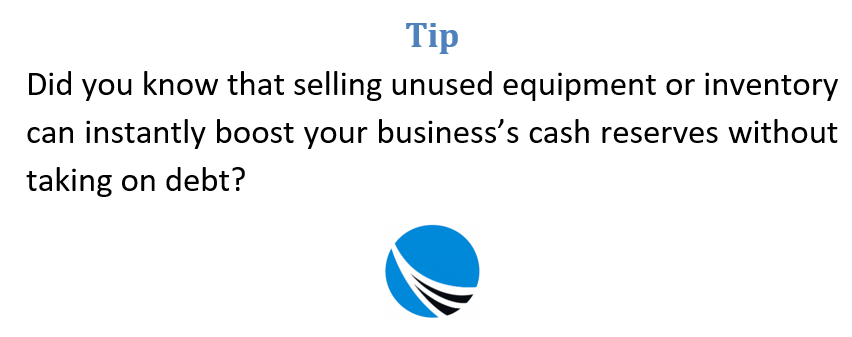Running a business comes with its fair share of financial hurdles, especially when you’re trying to scale. At times, expenses creep up faster than expected, and revenue doesn’t always keep pace. In moments like these, finding additional cash flow becomes essential—not just to stay afloat, but to grow sustainably. Let’s explore how you can locate hidden cash within your business and create a more stable financial foundation.

Begin With a Realistic Cash Flow Plan
The first and most crucial step is to understand your current financial situation. Creating a cash flow projection gives you clarity on when money enters and leaves your business. This insight can show when shortfalls are likely to happen and how much of a funding cushion you’ll need.
You can use spreadsheet templates or built-in forecasting features in most accounting tools. Don’t just stick to one plan—simulate different scenarios, like a drop in sales or a surge in operating costs, to see how your business would cope. These stress tests help you prepare for real-world fluctuations and stay ahead of potential trouble.
Free Up Idle Assets
Before turning to banks or investors, look inward. Your business may already be sitting on resources that can be converted into cash. Have a good look at your balance sheet and physical inventory. Are there items collecting dust—like spare parts, outdated technology, or vehicles not in daily use? These could be sold off to generate immediate cash.
You can even go a step further by leasing back important equipment that you still need. This way, you keep using the assets while unlocking the funds tied up in ownership. It’s a practical move, especially for machinery-heavy or logistics-based businesses.
Use Borrowing to Fill the Gaps
When internal fixes aren’t enough, borrowing might be the next step. Traditional business loans, overdrafts, or lines of credit can offer temporary support during lean months or periods of rapid expansion.
Another useful route is loan restructuring. If your business is carrying expensive short-term debt, refinancing can stretch repayment over a longer term and lower monthly obligations. You could also consider using your existing assets as security to access better loan terms or unlock extra cash through asset-based lending.
Be sure to weigh your options carefully—talking to your financial advisor or lender can help you identify the most cost-effective and flexible financing option for your situation.

Make Your Cash Flow Work Smarter
Cash flow isn’t just about how much you have—it’s about how fast it moves through your business. A sluggish cash cycle can choke your operations even when sales are strong. That’s why accelerating incoming payments is vital.
Encourage customers to pay via credit cards or direct debit arrangements. This way, funds hit your account faster. For clients you invoice regularly, set up automatic billing to reduce delays and ensure timely payments.
When taking on large projects, ask for a portion of the payment upfront. You can also schedule milestone payments throughout the project to ensure you’re not carrying all the financial burden until the end. These steps safeguard your cash position and help balance out project-related costs.
Be Proactive With Payment Policies
Cash flow often suffers when customers delay payments. To minimize risk, perform credit checks before extending terms to new clients. This helps ensure you’re dealing with reliable payers. Then, establish clear payment terms—like a 30-day window—and be upfront about penalties for late payments.
Adding online payment links to your invoices can also encourage quicker action. Platforms like Stripe, PayPal, or even local mobile money services make it easy for customers to settle bills instantly. Convenience can be a powerful motivator when it comes to getting paid.
Consider External Investment When Scaling Up
Sometimes, cash flow issues stem not from poor sales, but from growing too quickly without enough capital. If this is your situation, it may be time to consider outside investment. Bringing in investors can give you the funding needed to seize big opportunities or develop new products without draining operational cash.
However, investment comes with strings attached—usually in the form of shared ownership or profit. Working with an experienced advisor can help you evaluate offers, negotiate favorable terms, and understand how it will affect your control of the business.
Borrowing From Personal Circles—Use Caution
If all other funding sources are exhausted or take too long to secure, you might consider reaching out to people in your personal network. Borrowing from friends, family, or business acquaintances can provide quick relief. However, this option should be handled delicately.
Always put the terms of any such agreement in writing. Define the repayment schedule, interest (if any), and what happens if plans change. This transparency protects both parties and helps preserve personal relationships. While this can be a short-term solution, treat it with the same seriousness you would apply to a bank loan.
Build Long-Term Resilience
Improving your financial flexibility isn’t just about quick fixes. It’s also about developing habits that keep your business steady in the long term. Review spending regularly to cut back on non-essential expenses. Evaluate supplier contracts to negotiate better terms or discounts. Monitor inventory closely to avoid tying up funds in slow-moving stock.
Make it a habit to revisit your financial plan every few months. Your cash position is constantly evolving, and staying proactive keeps you ahead of surprises.
Take-home
Finding spare cash in a business doesn’t always mean chasing new revenue or taking on hefty loans. Sometimes, it starts with looking at what you already have and making smarter use of it. Whether it’s selling unused assets, tightening how you manage payments, or seeking funding with a clear plan in mind, there are many routes to strengthen your cash flow.
With foresight, careful decision-making, and the right tools, you can navigate periods of uncertainty and set your business up for long-term stability. Financial resilience isn’t just about surviving hard times—it’s about being ready to grow when the right opportunity comes.
